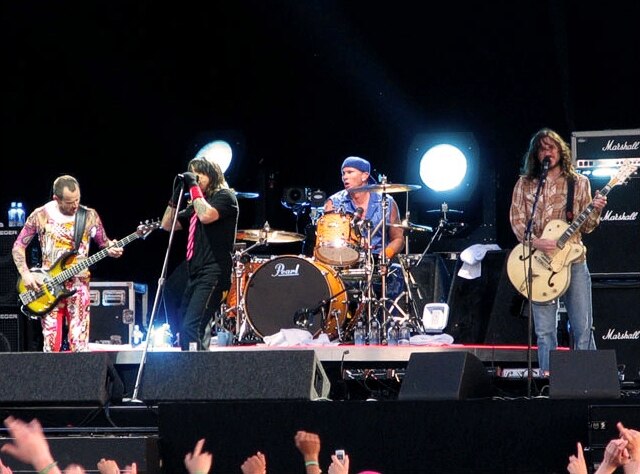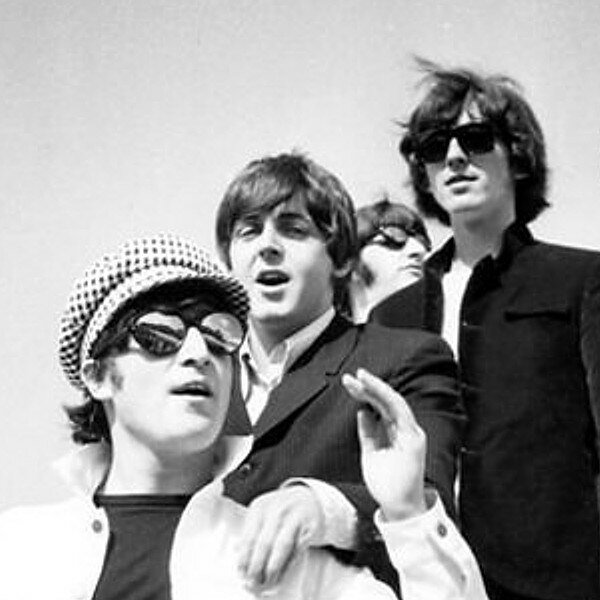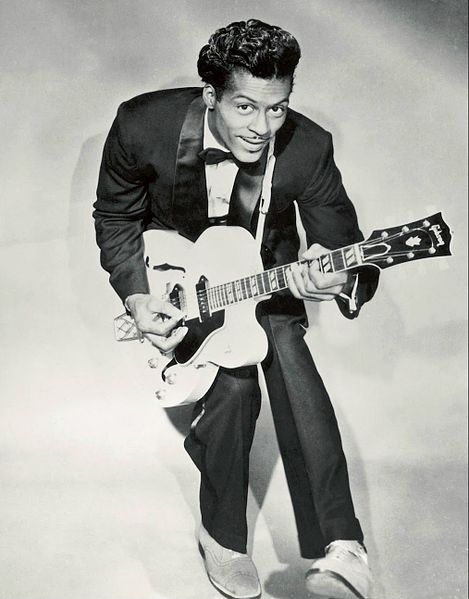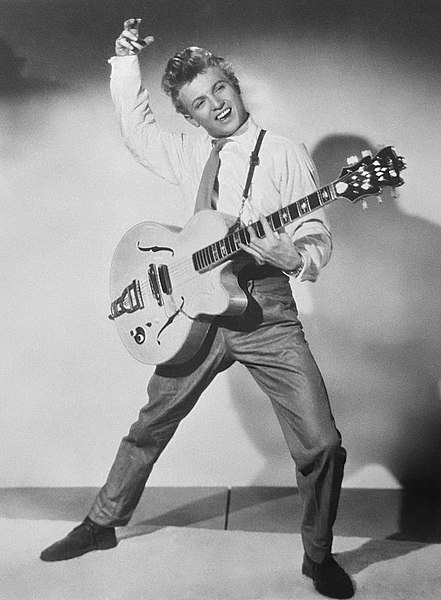Psychedelic rock is a rock music genre that is inspired, influenced, or representative of psychedelic culture, which is centered on perception-altering hallucinogenic drugs. The music incorporated new electronic sound effects and recording techniques, extended instrumental solos, and improvisation. Many psychedelic groups differ in style, and the label is often applied spuriously.
Jimi Hendrix on stage at Gröna Lund in Stockholm, Sweden in June 1967
"Swinging London", Carnaby Street, c. 1966
Producer Terry Melcher in the studio with the Byrds' Gene Clark and David Crosby, 1965
The Beatles on tour, July 1965
Rock is a broad genre of popular music that originated as "rock and roll" in the United States in the late 1940s and early 1950s, developing into a range of different styles from the mid-1960s, particularly in the United States and the United Kingdom. It has its roots in 1940s and 1950s rock and roll, a style that drew directly from the blues and rhythm and blues genres of African-American music and from country music. Rock also drew strongly from genres such as electric blues and folk, and incorporated influences from jazz and other musical styles. For instrumentation, rock has centered on the electric guitar, usually as part of a rock group with electric bass guitar, drums, and one or more singers. Usually, rock is song-based music with a 44 time signature using a verse–chorus form, but the genre has become extremely diverse. Like pop music, lyrics often stress romantic love but also address a wide variety of other themes that are frequently social or political. Rock was the most popular genre of music in the U.S. and much of the Western world from the 1950s to the 2010s.

Red Hot Chili Peppers in 2006, showing a quartet lineup for a rock band (from left to right: bassist, lead vocalist, drummer, and guitarist)
Chuck Berry in a 1958 publicity photo
Elvis Presley in a promotion shot for Jailhouse Rock in 1957
British rock and roll singer Tommy Steele in a 1958 promotional photo








